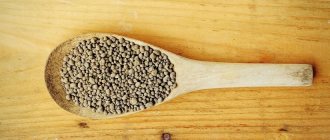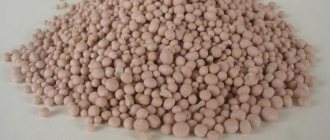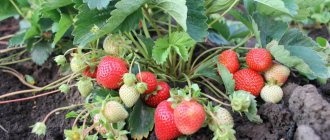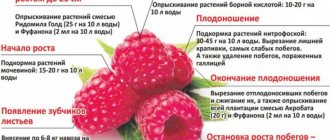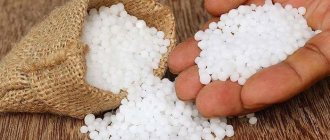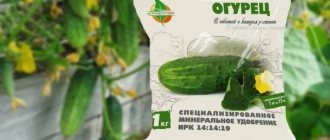How to measure fertilizers without scales. Garden arithmetic: how to measure fertilizers
How to measure the right amount of fertilizer using available tools.
You've probably found yourself in a situation where you have nothing to measure fertilizer with. There is a way out - use simple, familiar items that are almost always at hand. Simple garden arithmetic to help you!
Matchbox
In it you can measure:
19 g ammonium sulfate, 17 g ammonium nitrate, 13 g urea, 22 g simple granulated superphosphate, 20 g double superphosphate, 35 g phosphate rock, 19 g potassium chloride, 22 g, 26 g potassium sulfate, 34 g dolomite flour, 30 g limestone flour, 12 g slaked lime, 10 g wood ash, 8 g peat ash, 20 g nitrophoska.
Tablespoon
It will fit:
14 g ammonium sulfate, 12 g ammonium nitrate, 10 g urea, 17 g simple granulated superphosphate, 15 g double superphosphate, 26 g, 14 g potassium chloride, 17 g potassium salt, 20 g potassium sulfate, 25 g dorlomite flour, 22 g limestone flour, 9 g slaked lime, 8 g wood or 6 g peat ash, 15 g nitrophoska.
Tea spoon
This is 4 g of ammonium nitrate, 3 g of urea, 5 g of nitrophoska, 5 g of simple granulated superphosphate, 5 g of double superphosphate, 5 g of potassium chloride, 5 g of ammonium sulfate, 5 g of potassium salt, 9 g of phosphate rock, 6 g of potassium sulfate , 8 g dolomite 8 g limestone flour, 3 g slaked lime, 2.5 g wood ash, 2 g peat ash.
Glass 200 ml
With it you can measure 200 g of nitrophoska and double superphosphate, 186 g of ammonium sulfate, 165 g of ammonium nitrate, 130 g of urea, 220 g of potassium salt, 220 g of simple granulated superphosphate, 350 g of phosphate rock, 190 g of potassium chloride, 260 g of potassium sulfate , 340 g of dolomite flour, 300 g of limestone flour, 120 g of slaked lime, 100 g of wood and 80 g of peat ash.
Bucket 10 l
Contains: 8 kg of fresh horse manure, 5 kg of horse manure, but on a bed of sawdust, 9 kg of fresh mullein, 5 kg of dry peat, 5 kg of wood ash, 5 kg of bird droppings, 8 kg of humus, 12 kg of turf soil, 10 kg of old greenhouse or compost soil.
Recipes for using ash solution
There are different concentrations of solution or infusion of ash for use in various situations: feeding vegetables, flowers, treating pests.
| Rules of application | |
| For seeds | It is useful to soak seeds collected with your own hands and unprocessed store-bought ones before sowing in an ash infusion to saturate them with microelements. 1 tbsp. A level spoonful of ash is stirred in a glass of warm water and left for a day. The seeds are placed in a gauze bag, which is lowered into a glass with infusion for 6 hours. There is no need to rinse the seeds in clean water before sowing. |
| For seedlings | It is useful to water seedlings of vegetable crops with ash infusion (1 glass per bucket of water), replacing them with mineral phosphorus-potassium fertilizer. Cabbage seedlings, thickly dusted with ash powder immediately after planting, will not become a victim of cruciferous flea beetle attack. |
| For strawberries | In the second year of life, it is useful to feed garden strawberry bushes with ash. It is not necessary to prepare a solution; just scatter the ashes around the bushes. Use 2 cups per 1 square meter. m of soil area. This feeding will be effective in the second half of summer. Dusting berries with fine ash helps protect strawberries from gray rot. |
| For roses | Using ash as a fertilizer helps roses:
Ash helps rose bushes not lack boron, an element important for the plant. When planting a rose bush in the spring, add about a glass of dry ash to the soil hole. For feeding, use a solution in a concentration of 1 glass per bucket of water, spending 0.5 liters per bush. Apply fertilizer in the second half of summer 2-3 times during the growing season. The same solution can be used as foliar feeding on rose foliage, using half as much ash. |
| For indoor flowers | When planting and replanting plants, add 1 tbsp for each liter of soil. spoon of ash. It is useful for geraniums, fuchsias, cyclamen and other plants that do not like acidic soils. As a phosphorus-potassium fertilizer, use an infusion of 1 liter of water and half a glass of ash. The solution is kept for up to 5 days in a dark place, then the flowers are watered with it. |
Top dressing from nettles and ash
Fresh nettle is often used to make “green manure”. This infusion of fresh nettle grass and other weeds (shepherd's purse, tansy) is prepared for 5-7 days, adding the Baikal preparation or a little yeast (fresh bread or crackers) to speed up fermentation.
To increase the effect of fertilizing, add ash to the container with grass, about 200 g per 15 liters.
Before use, the finished infusion is diluted 7 times with clean water. It is used to feed all vegetable crops, except garlic, onions, and legumes.
Fertilizer scales. How can I replace fertilizer scales?
When preparing fertilizers and solutions, summer residents often begin to come up with different measuring devices, boxes, glasses and buckets. If you don’t have scales at hand at your dacha, you can always replace them with improvised means. The main thing is to know how much fertilizer a particular container can hold. You can keep this reminder at your dacha. It can be useful to you at any time. In one bucket with a volume of 10 liters you can hold: - 10 kg of compost or old greenhouse soil; — 5 kg of dry peat; - 12 kg of turf soil; — 15 kg of chicken manure; — 5 kg of wood ash; — 8 kg of humus; — 8 kg of fresh horse manure; — 9 kg of cow manure; One glass (250 grams) may contain: - 160-180 grams of ammonium nitrate or ammonium sulfate; — 90-100 grams of wood ash; - 260 grams of potassium sulfate; — 185-215 g of superphosphate; - 185 grams of potassium chloride; — 180-200 grams of fertilizer mixture (vegetable, fruit, etc.); A matchbox (empty) may contain: - 12 g. fluff lime; - 10 gr. ash; - 15 gr. carbamide (urea); — 17 gr. ammonium nitrate; — 17 gr. ammonium sulfate; — 22 gr. sodium nitrate; — 18 gr. potassium nitrate; — 22 gr. superphosphate in granules; — 24 gr. superphosphate powder; - 20 gr. ammophos; - 15 gr. nitroammofoski; - 15 gr. nitrophos; — 18 gr. potassium chloride; — 25 gr. potassium sulfate; - 20 gr. potassium salt; — 25 gr. potassium nitrate; - 20 gr. potassium magnesium; - 20 gr. complex fertilizers; — 34 gr. phosphorus flour; Water can be measured: - 1 glass (faceted and thin, with a rim) = 250 cc - 250 g. - 1 glass (faceted, without rim) = 200 cc - 200 g. - 1 tablespoon = 15 cc - 15 g. water; - 1 teaspoon = 5 cc - 5 g. water; - 1 faceted glass (200 gr.) = 13 tablespoons of water; - 1 tablespoon = 3 teaspoons; - 1 teaspoon = 100 drops; Place 0.25-0.5 grams of light powder or 1-2 grams of heavy powder on the tip of the knife. If you feed small plants or seedlings, use small doses of fertilizer. I will give doses of fertilizers for a tablespoon and a teaspoon. The accuracy is approximately 0.5 grams, and fertilizer should be poured level with the edges, without a slide. A tablespoon (15 gr.) may contain: - 12 gr. ammonium nitrate; - 9 gr. slaked lime; — 23 gr. dolomite flour; — 26 gr. lime flour; — 17 gr. potassium salt; - 10 gr. carbamide (urea); — 14 gr. ammonium sulfate; - 20 gr. potassium sulfate; — 17 gr. superphosphate (granulated); — 15 g superphosphate (double); — 18 gr. superphosphate (simple); — 28 gr. phosphorus flour; — 14 gr. potassium chloride; A teaspoon (5 gr.) may include: - 4 gr. ammonium nitrate; - 3 gr. slaked lime; — 8 gr. dolomite flour; - 9 gr. lime flour; - 5-6 gr. potassium salt; - 3 gr. carbamide (urea); - 5 gr. ammonium sulfate; — 6-7 gr. potassium sulfate; - 5-6 gr. superphosphate (granulated); — 5 g superphosphate (double); - 6 gr. superphosphate (simple); - 6 gr. phosphorus flour; - 5 gr. potassium chloride; If you use measuring cups and beakers, then use the scale for water or liquid in your calculations.
Ash in the garden
If you add ash to the soil several times a year, this will significantly improve plant nutrition and increase their resistance to various ailments and pest attacks. The leaves will become tougher and stronger, insects simply will not be able to chew through them.
Ash can be added both in dry form and in the form of a solution. The main thing is to maintain the correct proportions: 1 full faceted glass per standard (10 liters) bucket of water. A bucket is enough for 1-2 m2 of land. If you “stretch” it further, the soil will receive less nutrients.
How many grams of agricola are in a teaspoon? How many grams are in a teaspoon (table)
Good afternoon, today we will tell you how many grams are in a teaspoon. Using kitchen charts makes it easier to measure ingredients to prepare a recipe. Especially if you don’t have scales, measuring spoons and measuring cups on hand. But in every kitchen there is a teaspoon. You can get used to such measuring utensils. And in the future it will even be very convenient and quick to measure in spoons. If you have never done this before, we recommend you try it. Very comfortably!
Attention! Using a teaspoon as a unit of measurement, do not forget that different products with the same volume have different weights.
How many grams in a teaspoon
| Tea spoon | In grams (with a slide) | In grams (without slide) |
| gelatin | 5 years | 3 years |
| starch | 10 g. | 7 years |
| flour | 10 g. | 5 years |
| Sahara | 7 years | 5 years |
| salt | 10 g. | 7 years |
| soda | 12 | 8 years |
| dry yeast | 4 years | 3 years |
| milk powder | 12 | 7 years |
| citric acid | 7 years | 5 years |
| baking powder | 5 years | 3 years |
| protein | 8 years | 5 years |
| powdered sugar | 10 g. | 7 years |
| instant coffee | 2.5 g. | 2 years |
| cocoa powder | 5 years | 3 years |
| ground red pepper | — | 1.79 g. |
| ground black pepper | — | 2.33 g. |
| allspice ground | 2.4 g. | |
| ground cinnamon | 8 years | 5 years |
| egg powder | 6 years | 4 years |
| semolina | 7 years | 4 years |
| buckwheat | 8 years | 5 years |
| millet | 8 years | 5 years |
| oatmeal | 6 years | 4 years |
| pearl barley | 8 years | 5 years |
| barley groats | 7 years | 4 years |
| corn grits | 7 years | 4 years |
| rice | 8 years | 5 years |
| poppy | 5 years | 3 years |
| dry grass | 3 years | 2 years |
Important! If 1 teaspoon of sugar is indicated, this means a small heaped spoon of sugar. Other recipes prescribe “1 small spoon of sugar without a slide” - that’s how it should be, without a slide.
Measuring table, liquid products in a teaspoon
| Tea spoon | Weight, grams (g) | Volume, milliliters (ml) |
| sunflower oil | 5 years | 5 ml. |
| vinegar | 5 years | 5 ml. |
| water | 5 years | 5 ml. |
| milk | 5 years | 5 ml. |
| sour cream | 10 g. | 5 ml. |
| cream | 5 years | 5 ml. |
| condensed milk | 12 | 5 ml. |
| kefir | 6 years | 5 ml. |
| yogurt | 10 g. | 5 ml. |
| honey | 7 years | 5 ml. |
| tomato paste | 10 g. | 5 ml. |
| soy sauce | 7 years | 5 ml. |
| mayonnaise | 8 years | 5 ml. |
| Liquor | 8 years | 5 ml. |
| jam | 15 | 5 ml. |
Depending on the manufacturer, teaspoons may have a slight difference in volume, which means the weight and volume of the products they measure may differ (up or down, by fractions of grams). It's a very small difference.
How to measure the weight of a product without scales
measure the weight of food without special instruments. The main thing is to pay close attention to what you have at hand, and you can get a fairly accurate result. Therefore, if you do not have special kitchen scales
, and the recipe must be followed down to the gram, don’t panic, just start measuring.
You will need
- Measurement table, food, utensils.
Instructions
- The easiest way is to use a special measurement table. You can easily find it in a cookbook or on specialized websites on the Internet. It offers the average value of a particular product contained in a teaspoon, tablespoon, dessert spoon, glass and bowl. So, for example, according to this table, a teaspoon holds 5 g of ordinary water, a tablespoon holds 18, and a faceted glass filled to the top holds 200. Just select the product you need and calculate how much you need in certain cutlery .
- If lengthy math calculations and grueling calculations aren't your thing, use your hand. For example, it has long been calculated that 100 g of meat or fish is a piece the size of a woman’s palm. If the cook is a man, then he can safely add another 50 g for calculations. A portion of cereal, the size of a fist, will weigh 200 g. By the way, the hand principle is used when calculating the required portion for a healthy diet. You need to eat 4-6 times a day in palm-sized portions.
- In some cases, special dishes with measuring divisions printed on them are suitable for measurements. On some glasses you can find markings for several products at once - flour, sugar, water and salt. The same goes for chef's plates and bowls.
- You can calculate the weight of the product based on the container you are working with. So, if you choose a bowl with a capacity of 250 g, and you need to weigh out about 50 g of product, then simply divide the total number of grams of the container by the required amount. Then mentally determine in the cup the parts equal to the resulting figure, and then weigh the product. However, keep in mind that the weight of various products also depends on the consistency and density of the starting material. Therefore, this weighing method is not suitable for all products.
- Another option is to simply remember how much food takes approximately how long. One of the advantages of this method is that it trains your memory perfectly. However, if you do not rely too much on your memory, then it is best to insure yourself with some other alternative method of weighing products.
- KakProsto.ru
How to measure. 1 gram. 1 glass (“heaped”) contains grams:
- 11 tablespoons of cereal
- 10 tablespoons sugar or salt
1 gram of water = 1 milliliter of water = 1 cubic centimeter of water, by weight (that is, having a standard twenty milliliter syringe with ordinary water, you can get a reference weight from 1 to 20 grams with an accuracy of fractions of a gram, as well as a volume of up to 20 cc)
How can you measure two grams without using a scale?
How can you measure two grams?
It depends on what you are going to measure.
If the product is liquid, then you can find out the reference density of this substance, calculate the volume that the 2 grams you need will occupy, and then draw this substance into a syringe to the required volume (the smaller the syringe in volume, the more accurately you measure the sample).
If the product is free-flowing, then again, its bulk density can be determined. For example, pour a pack of sugar weighing 1 kg into a measuring container and determine the volume occupied by it. Knowing the bulk density, you can already measure the required samples using the same measuring container.
If the product is solid and at the same time has a constant cross-section in one direction. Based on its density and geometric volume or the mass of the entire product known in advance, calculate how much mass is per unit length of a constant section. And then, using a ruler, measure the desired length of the sample and cut it. (Suppose the rope has a specific gravity of 50 grams/meter, which means we measure 4 cm with a ruler and cut it off).
Scales for a given mass can be made, for example, from a piece of wood or foam. You can calculate the volume of a piece of a given piece of wood so that when it is immersed to the water level, the load balancing the Archimedean force is exactly 2 grams. And use these “scales”: place a sample on a piece of wood until the piece of wood sinks to the level of the liquid.
Found a mistake? Report it: 1) Select the error with the mouse 2) Press CTRL+Enter. Read more.
Tip - how to measure 1 g of dry fertilizer:
I cut the syringe so that it is convenient to measure 1 ml. 1 ml contains just 1 g of many dry fertilizers (I checked Peters, potassium monophosphate):
You can cut it as you wish - my syringe is cut to 1.4 - because it’s more convenient for me to measure exactly 1 ml - it doesn’t spill out.
The same thing - which part of the syringe to use - for me it is more convenient than the one with a needle, for others the one with a piston will be more convenient.
The main thing is to measure 1 ml.
I'm hoping someone else will share their method for measuring small amounts of fertilizer without a scale.
What does 1 gram of powder look like? How much washing powder in a tablespoon and a teaspoon
It is not difficult to answer the question “how many grams of washing powder are in a tablespoon.” But besides this point, it is important to understand how much powder is required to load into a washing machine, how much powder is needed to wash different fabrics, for what volume of clothes a spoon of washing powder will be enough, and for what volume even 100 grams will not be enough.
Powder dosage
Not every housewife has a kitchen scale at home. Therefore, many of us are accustomed to putting powder, deodorants, rinses, and conditioners “by eye.” This method is fraught with high consumption of detergent. The number of washes is reduced from 40 to 30, or even to 20. Thus, you have to spend 2 times more on washing.
But the most important thing is that clothes, after washing with double the amount of product, do not become cleaner. On the contrary, the powder is washed out of clothes much more poorly, which requires additional consumption of water, electricity and time. And the washing machine breaks down much faster and gets scale on the drum.
It is for these reasons that it is important to know how much powder a tablespoon, teaspoon and measuring cup holds.
So how many grams of washing powder are in a teaspoon?
The dosage of 1 teaspoon is 5 grams. This amount can be used to wash:
- Socks;
- underwear;
- T-shirt;
- shorts;
- light robe;
- blouse;
- gloves, hat;
- cloth bag, etc.
In general, a teaspoon of detergent will cope with anything that weighs up to 200 grams (dry). This minimum dosage is more suitable for hand washing. But for clothes weighing 2-3 kilograms, you will need a tablespoon.
Let's return to the fact that every manufacturer uses every possible method to increase sales of its own products. Including recommendations for use. If you follow the instructions on the package, the detergent will run out 40% faster. To prevent this, a regular tablespoon is recommended as a measuring vessel.
1 tablespoon contains 25 grams of micro washing granules. Thanks to this quantity, you can wash such things as:
- one-and-a-half bed linen;
- sweatshirt;
- jeans;
- sweater;
- shoes (sneakers, slippers);
- robe;
- windbreaker;
- winter trousers, etc.
Anything that weighs up to 1 kilogram requires only 1 tablespoon of granules for washing.
If the housewife is faced with the task of washing 8 kilograms of clothes, then for convenience she will need a measuring cup. More often they are plastic and come complete with an automatic machine. If you are less fortunate and it was not included in the kit, a glass with ready-made markings can be purchased at cosmetic and hardware stores.
To wash blankets, jackets, down jackets, family bedding sets, blankets and pillows, you will need 200 grams of detergent. Or 8 tablespoons. It seems like a lot, but in fact, we use much more when we don’t count the product.
How many grams of iron sulfate are in a tablespoon. Good afternoon, dear readers!
In autumn, you need to take care of the health of your garden. And the best remedy for this is iron sulfate. The main thing is not to confuse it with copper, on this occasion I have
And so - iron sulfate. At its core, it is an iron salt. It really costs pennies. And at the same time practically safe for humans and animals. Unlike the same copper. And the time of its use is early spring and autumn.
Why is that? Because iron sulfate should not be used on vegetative (green) plants. This is a powerful remedy against various diseases and some pests. But it can burn the leaves even in the right concentration. Which almost never happens when using copper sulfate. Therefore, iron sulfate can be used on plants without leaves, or when the leaves are no longer needed much. Which means now.
Iron sulfate in the garden is used for the following purposes:
- - soil disinfection
- -fighting diseases and pests of bushes and trees (both fruit and ornamental).
- -disinfection of rose gardens before closing them for the winter
- -disinfection of any wooden elements from mold and fungi
- -fighting lichens on trees and bushes
- -fighting mosses and lichens on the ground and anywhere.
- As an iron-containing fertilizer (but I've never done that!)
How to use.
This is salt, so you can measure it with a tablespoon. Spoon without a slide - 20g. To obtain a solution, dilute the required amount in a small amount of warm water and add cold water to the required volume. You cannot use iron containers and objects; if the solution gets on them, they will most likely deteriorate and rust. This also applies to iron structures in the garden, for example, a fence; the solution should not get on it for the same reason. Close the fence during processing; you can use cardboard.
And by the way, this solution can be stored, unlike some others, such as Bordeaux mixture, in a closed container for as long as you wish. But of course within reasonable limits.
It is best to spray in the “fog” mode, that is, the spray should be as fine as possible. Well, one more thing, the air temperature should be at least 5 degrees.
Well, the most important thing is the concentration of the solution.
- To spray roses, I use a concentration of 1 to 1.5% (although 3% is written everywhere), but I noticed that not only leaves get burns, but also shoots, especially young or damaged ones. In principle, a 1% solution is enough to kill all pathogens. For very young bushes it is better to take a 0.5% concentration. I also spray the soil! For spraying trees and bushes (including to rid them of lichens) - after leaf fall! - 3% concentration. For soil disinfection and control of lichens and mosses on the ground - 5% solution.
How to calculate concentration? 100 g of powder per 10 l-1% solution. 300 g of powder per 10 l-3% solution. By analogy, the amount of powder for any amount of water is calculated.
After treatment, the leaves, if they remain, will turn black and fall off. This is fine!
To combat mosses, treatment is done twice, a week apart.
And of course, we carry out all treatments in dry weather.
